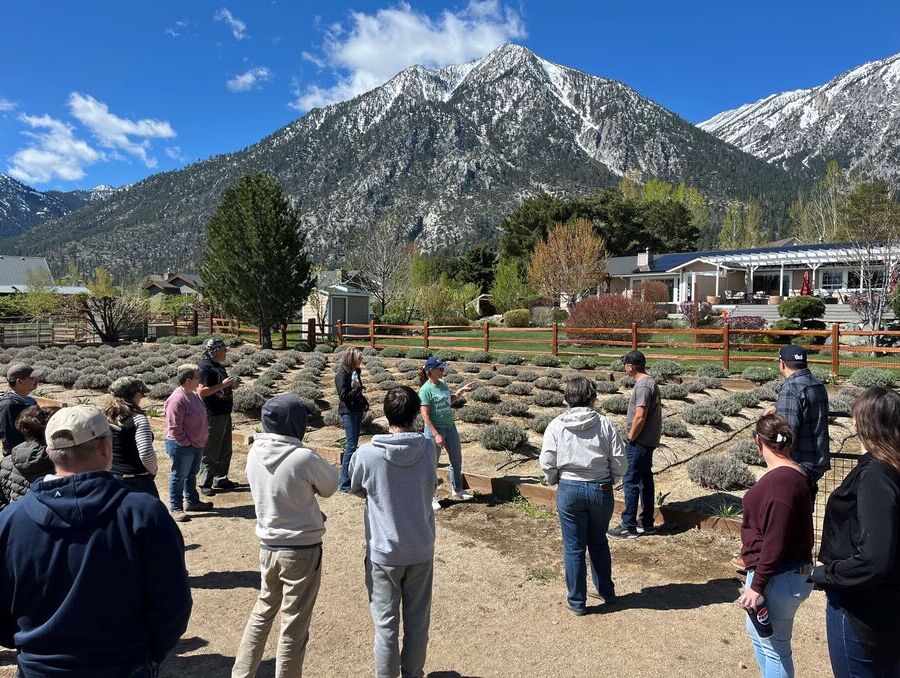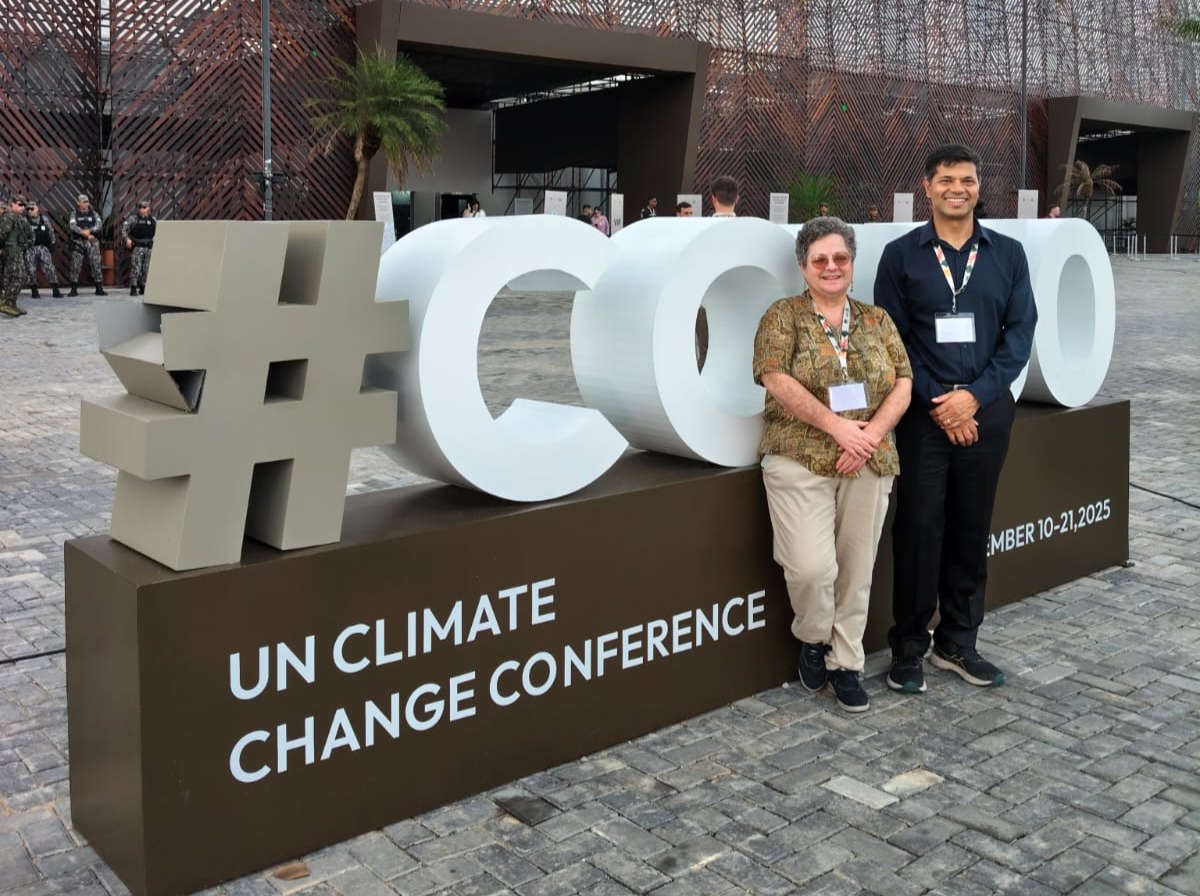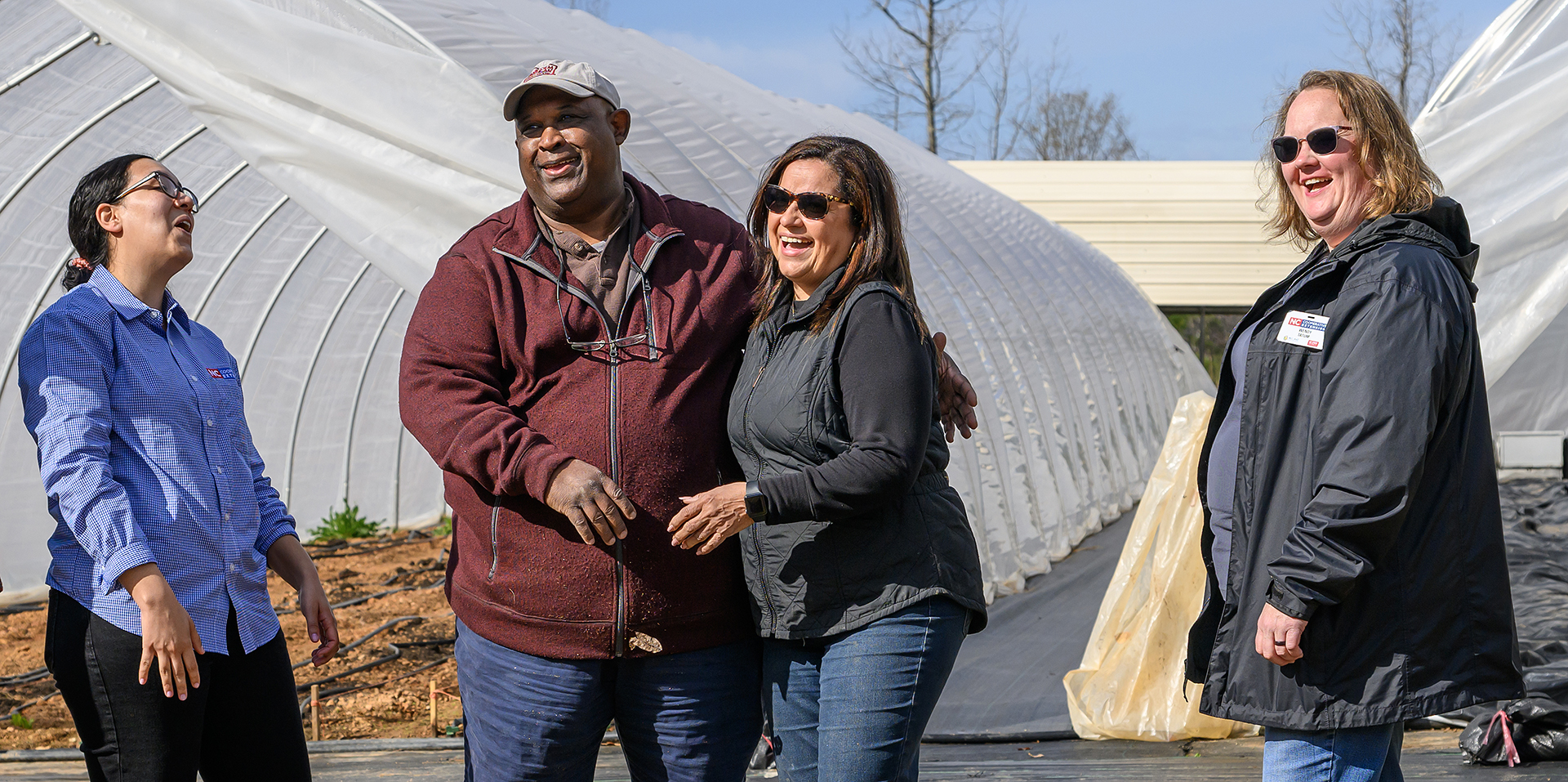Strengthening Nevada’s Food Systems: A Community Effort – unr.edu

Report on University of Nevada, Reno’s Agricultural Initiatives and Alignment with Sustainable Development Goals
Introduction: Addressing Agricultural Challenges in Nevada
Nevada’s agricultural sector, comprising 3,100 farms, confronts significant environmental and economic challenges that impact the state’s food security. These challenges are being addressed by the University of Nevada, Reno, through its Experiment Station and Extension units, aligning with multiple Sustainable Development Goals (SDGs).
- Environmental Pressures: Farmers contend with extreme temperatures and water scarcity, threatening crop production and sustainability. This directly relates to SDG 13 (Climate Action) and SDG 6 (Clean Water and Sanitation).
- Economic Viability: Local producers struggle to compete with large-scale, out-of-state operations, impacting local economies and workforce stability, a concern under SDG 8 (Decent Work and Economic Growth).
- Food Security: A fragile food system, highlighted during the pandemic, underscores the need for a resilient local food supply to combat hunger, a primary objective of SDG 2 (Zero Hunger).
Advancing SDG 2 (Zero Hunger) through Enhanced Food Security and Production
Tackling Food Insecurity in Nevada
Food insecurity remains a critical issue in Nevada, necessitating targeted interventions to ensure all residents have access to sufficient, safe, and nutritious food.
- At its peak, nearly 30% of Nevada households experienced food insecurity, compared to a national rate of 21%.
- A May 2025 analysis found that approximately one in seven southern Nevada residents is food insecure, with child hunger rising to 22%.
- University initiatives aim to strengthen the local food supply, directly contributing to food system resilience and the goal of Zero Hunger.
Innovations in Local Food Systems
- Urban Indoor Farm Project: Launched in 2024, this initiative grows nutrient-rich vegetables for food banks and trains farmers in indoor agriculture, promoting year-round local production and addressing SDG 12 (Responsible Consumption and Production) by reducing reliance on imported goods.
- Healthy Food Systems Program: In partnership with local farmers, this program is developing the region’s first food hub to provide logistical support for distribution, processing, and marketing, making small farms more competitive.
- Healthy Food Access Map: This tool tracks 24 categories of food assistance programs, improving coordination and helping residents find affordable, healthy food, thereby closing access gaps.
Fostering Innovation for SDG 6 (Clean Water) and SDG 13 (Climate Action)
Research in Climate-Resilient Agriculture
The University’s Experiment Station is leading research to develop agricultural solutions for Nevada’s increasingly arid conditions, focusing on water conservation and crop resilience.
- Drought-Tolerant Crops:
- Researchers have identified cactus pear varieties as a drought-resistant fodder source for livestock.
- Over 200 highly drought-tolerant sorghum varieties with high protein levels have been developed.
- Six varieties of teff, a water-efficient alternative to alfalfa, have been identified that could increase grain yield by up to 60%.
- Advanced Technology for Resource Management:
- The NevadaView network utilizes remote sensing and data science to provide farmers with web-based maps of land productivity and groundwater locations.
- These innovations support precision irrigation and efficient water use, directly advancing goals for sustainable water management.
Supporting SDG 8 (Decent Work and Economic Growth)
Building a Skilled Agricultural Workforce
To address workforce shortages and high startup costs for new farmers, the University has established comprehensive training and mentorship programs.
- Desert Farming Initiative (DFI): This program supports small- to mid-sized farmers through targeted training.
- Nevada Farm Apprenticeship Program: An intensive one-year training program for aspiring farm operators, providing certified skills for new agricultural businesses.
- Grow Organic Nevada: A mentorship program that pairs new farmers with seasoned organic producers to meet growing market demand.
- Extension Programs for Entrepreneurs:
- The Herds & Harvest Program, Meat Workforce Development Program, and Food Business Center reached over 250 participants in 2024–2025.
- These programs provide certifications and business skills training to help farmers and food entrepreneurs operate viable and sustainable businesses.
Promoting SDG 10 (Reduced Inequalities) through Inclusive Programs
Supporting Tribal Agriculture and Food Sovereignty
Extension’s Nevada Tribal Programs work to overcome historical challenges faced by Nevada’s 21 recognized Native American tribes, strengthening food sovereignty and economic opportunity.
- In 2024, the program was reorganized to better serve all 28 reservations, bands, colonies, and community councils.
- Training was provided in hoop house construction, soil health, and farm risk management.
- Initiatives in Tribal Emergency Management and Cultural Harvest were launched to enhance community preparedness and preserve traditional knowledge, including the harvesting of medicinal plants.
Strengthening SDG 17 (Partnerships for the Goals)
Fostering Collaboration and Knowledge Exchange
The University’s success is built on strong partnerships with federal agencies, community organizations, and producers across the state.
- Nevada Farm Network: A grower-led initiative launched in 2024, this online hub connects over 100 producers for mentorship and resource sharing on topics like soil health and water conservation.
- Statewide Conferences: Events such as the Nevada Urban Farm Conference and Nevada Small Farms Conference engaged over 350 participants in 2024–2025, providing strategies for risk management and sustainable growth.
- Federal Funding: Support from the U.S. Department of Agriculture is critical for funding numerous programs, demonstrating a successful partnership model for advancing sustainable agriculture.
Analysis of Sustainable Development Goals in the Article
1. Which SDGs are addressed or connected to the issues highlighted in the article?
-
SDG 2: Zero Hunger
The article directly addresses food insecurity in Nevada, which is the central theme of SDG 2. It opens by discussing the challenges farmers face in supplying fresh food and explicitly states its goal is “Tackling Nevada’s growing food insecurity.” It provides statistics on the prevalence of hunger, such as “one in seven residents is food insecure” and a rise in child hunger, linking the University’s agricultural research and support programs directly to ending hunger and promoting sustainable agriculture.
-
SDG 4: Quality Education
This goal is addressed through the numerous training, mentorship, and knowledge-sharing initiatives led by the University of Nevada, Reno. Programs like the Nevada Farm Apprenticeship Program, the Herds & Harvest Program, and the Nevada Farm Network are designed to provide farmers with technical and vocational skills. The article highlights how these programs build “a skilled agricultural workforce” and help “emerging Nevada farmers to stay the course” by providing education and hands-on experience.
-
SDG 6: Clean Water and Sanitation
The article emphasizes the challenge of “scarce water” in Nevada’s arid climate. SDG 6 is relevant through the focus on water-use efficiency in agriculture. The research into “drought-tolerant crops” like cactus pear, sorghum, and teff, along with technologies like “precision irrigation,” are direct efforts to manage water resources sustainably and increase water efficiency, a key component of this goal.
-
SDG 8: Decent Work and Economic Growth
The article connects to SDG 8 by focusing on the economic viability of small-scale farms and building a sustainable agricultural workforce. It addresses economic challenges like “higher startup costs, lack of workforce and fluctuating market prices.” Initiatives such as the Food Business Center, which “builds business skills to help food entrepreneurs thrive,” and the apprenticeship program, which makes graduates “eligible for programs and resources that provide startup funding,” aim to create decent work and support sustainable economic growth in the rural and agricultural sectors.
-
SDG 9: Industry, Innovation, and Infrastructure
This SDG is addressed through the University’s role in advancing agricultural science and technology. The article details how researchers are “developing innovative solutions” such as identifying new crop varieties with higher protein levels, applying “advanced remote sensing and data science technologies” to create agricultural resource maps, and developing indoor farming techniques. These efforts represent an enhancement of scientific research and technological capability in the agricultural sector.
-
SDG 10: Reduced Inequalities
The article specifically addresses the challenges faced by Nevada’s Native American tribes, a vulnerable group. The section “Supporting Tribal agriculture” highlights how “centuries of relocation to marginal lands and complex land ownership have made farming a constant challenge” for these communities. Extension’s targeted programs, such as training on hoop houses, soil health, and cultural harvesting, are direct efforts to reduce inequalities and empower these communities.
-
SDG 13: Climate Action
SDG 13 is relevant due to the article’s focus on building resilience to climate-related challenges. The text mentions that the University’s research helps prepare producers for “increasingly arid conditions” and “longer and more frequent dry spells.” The development of drought-tolerant crops and water-efficient farming systems are key adaptation strategies to strengthen the resilience of Nevada’s food system against the impacts of climate change.
2. What specific targets under those SDGs can be identified based on the article’s content?
-
Target 2.1: By 2030, end hunger and ensure access by all people… to safe, nutritious and sufficient food all year round.
- The article’s entire premise of tackling food insecurity, supporting local food production, and initiatives like the Healthy Food Access Map directly align with this target.
-
Target 2.3: By 2030, double the agricultural productivity and incomes of small-scale food producers…
- Programs aimed at helping small farmers become more competitive, reduce costs (e.g., the planned food hub for distribution), and increase yields (e.g., teff varieties that “could produce up to 60% more grain per acre”) support this target.
-
Target 2.4: By 2030, ensure sustainable food production systems and implement resilient agricultural practices that increase productivity and production… and strengthen capacity for adaptation to climate change, extreme weather, drought…
- The research on drought-tolerant crops (sorghum, teff, cactus pear) and water conservation techniques are prime examples of implementing resilient agricultural practices to adapt to Nevada’s arid climate.
-
Target 4.4: By 2030, substantially increase the number of youth and adults who have relevant skills, including technical and vocational skills, for employment, decent jobs and entrepreneurship.
- The Nevada Farm Apprenticeship Program, the Meat Workforce Development Program (which provides certifications), and the Food Business Center are all designed to equip individuals with the specific skills needed for agricultural entrepreneurship and employment.
-
Target 6.4: By 2030, substantially increase water-use efficiency across all sectors…
- The development of teff as a “water-efficient alternative to alfalfa, which consumes two to three times more water per season,” is a direct effort to improve water-use efficiency in agriculture.
-
Target 8.5: By 2030, achieve full and productive employment and decent work for all…
- The focus on building a “skilled agricultural workforce” and helping farmers operate “viable and sustainable businesses” contributes to creating productive employment in the state’s food system.
-
Target 9.5: Enhance scientific research, upgrade the technological capabilities of industrial sectors… encouraging innovation…
- The University’s research in biochemistry and molecular biology to identify new crop varieties and the use of remote sensing technology via NevadaView to map resources are clear examples of enhancing scientific research and innovation in agriculture.
-
Target 10.2: By 2030, empower and promote the social, economic and political inclusion of all…
- The creation of Extension’s Nevada Tribal Programs to provide targeted training and support for the state’s 21 recognized tribes is a specific action toward this target.
-
Target 13.1: Strengthen resilience and adaptive capacity to climate-related hazards and natural disasters in all countries.
- The overarching goal to “build a stronger, more resilient food system for the state” in the face of climate challenges like drought and extreme temperatures directly addresses this target.
3. Are there any indicators mentioned or implied in the article that can be used to measure progress towards the identified targets?
- Prevalence of food insecurity: The article provides baseline data that can be used as an indicator. It states that “about one in seven residents is food insecure” and that “child hunger in the region has risen to 22% in 2025, up from 18% the year before.” Tracking these percentages over time would measure progress towards Target 2.1.
- Number of individuals trained and supported: The article provides several quantitative metrics, such as “100 producers” using the Nevada Farm Network, “65 new producers” in the Herds & Harvest Program, “171 participants” in the Food Business Center, and “21 individuals” certified by the Meat Workforce Development Program. These numbers serve as indicators for progress on Targets 4.4 and 8.5.
- Agricultural productivity and efficiency: The article implies indicators of productivity. For example, the new teff varieties could “produce up to 60% more grain per acre.” Water efficiency is indicated by the comparison of teff to alfalfa, which “consumes two to three times more water per season.” These metrics can measure progress towards Targets 2.3, 2.4, and 6.4.
- Innovation and research output: The number of new crop varieties developed or tested, such as the “200 sorghum food and forage varieties” and the screening of “368 teff varieties,” can serve as an indicator for scientific research and innovation under Target 9.5.
- Access to information and resources: The existence and usage of tools like the Healthy Food Access Map, which tracks “24 categories of food assistance programs,” and the NevadaView web-based maps are indicators of improved infrastructure and support systems for both consumers and producers.
4. Table of SDGs, Targets, and Indicators
| SDGs | Targets | Indicators Identified in the Article |
|---|---|---|
| SDG 2: Zero Hunger | 2.1 End hunger and ensure access to food. 2.3 Double productivity/incomes of small-scale producers. 2.4 Ensure sustainable and resilient food production. |
– Prevalence of food insecurity (one in seven residents). – Child hunger rate (22%). – Increased grain yield (up to 60% more per acre for teff). |
| SDG 4: Quality Education | 4.4 Increase the number of people with relevant vocational skills. | – Number of participants in training programs (e.g., 65 in Herds & Harvest, 171 in Food Business Center). – Number of individuals receiving certifications (e.g., 21 in meat processing). |
| SDG 6: Clean Water and Sanitation | 6.4 Substantially increase water-use efficiency. | – Reduction in water consumption per crop (teff uses 2-3 times less water than alfalfa). |
| SDG 8: Decent Work and Economic Growth | 8.5 Achieve full and productive employment and decent work. | – Number of new producers and food entrepreneurs supported. – Creation of viable and sustainable agricultural businesses. |
| SDG 9: Industry, Innovation, and Infrastructure | 9.5 Enhance scientific research and upgrade technology. | – Number of new crop varieties developed/tested (200 sorghum, 368 teff). – Application of advanced technology (remote sensing, hydroponics). |
| SDG 10: Reduced Inequalities | 10.2 Empower and promote the inclusion of all. | – Implementation of targeted programs for 28 Tribal reservations, bands, and colonies. |
| SDG 13: Climate Action | 13.1 Strengthen resilience and adaptive capacity to climate-related hazards. | – Development and adoption of drought-tolerant crops and water-efficient farming systems. |
Source: unr.edu
What is Your Reaction?
 Like
0
Like
0
 Dislike
0
Dislike
0
 Love
0
Love
0
 Funny
0
Funny
0
 Angry
0
Angry
0
 Sad
0
Sad
0
 Wow
0
Wow
0














































.jpg.webp?itok=0ZsAnae9#)







:focal(1500,1000)/https://media.globalcitizen.org/a6/9a/a69a4720-d8a1-4715-b596-18738d03c05c/rotary_polio_hero_image.jpg?#)

/countries/sri-lanka/photo-credit---dmc-sri-lanka.tmb-1200v.jpg?sfvrsn=dc298bcc_1#)



















